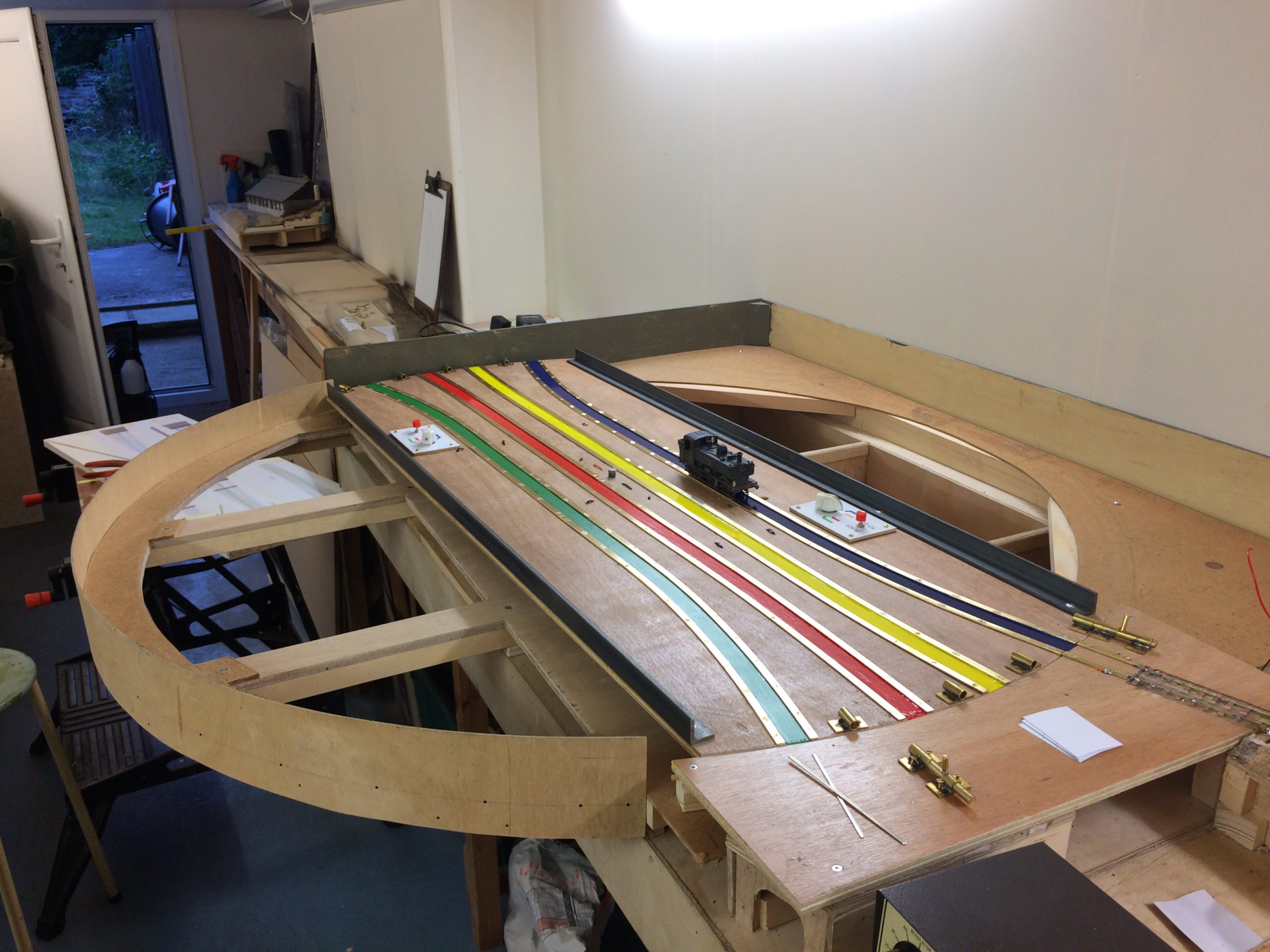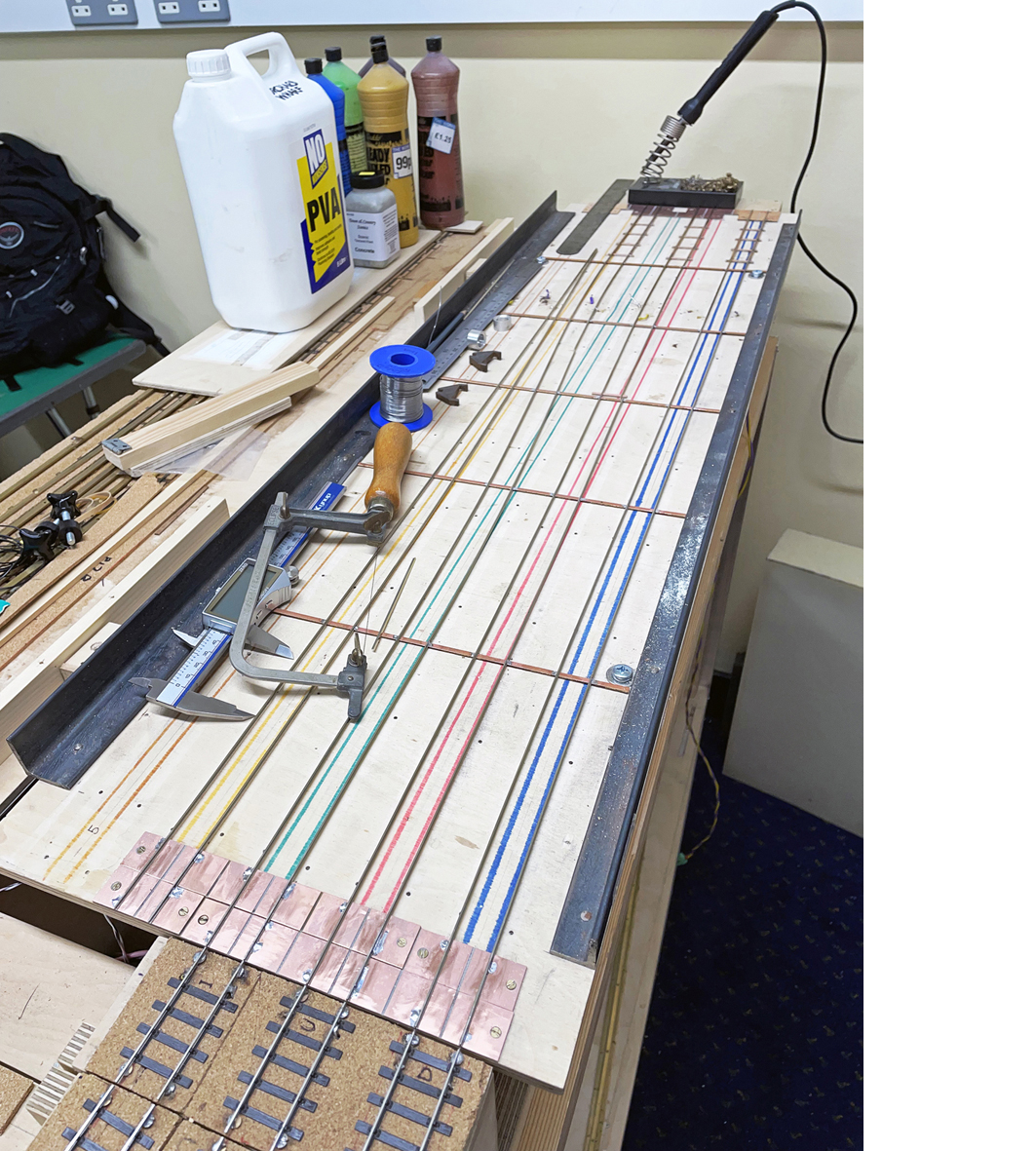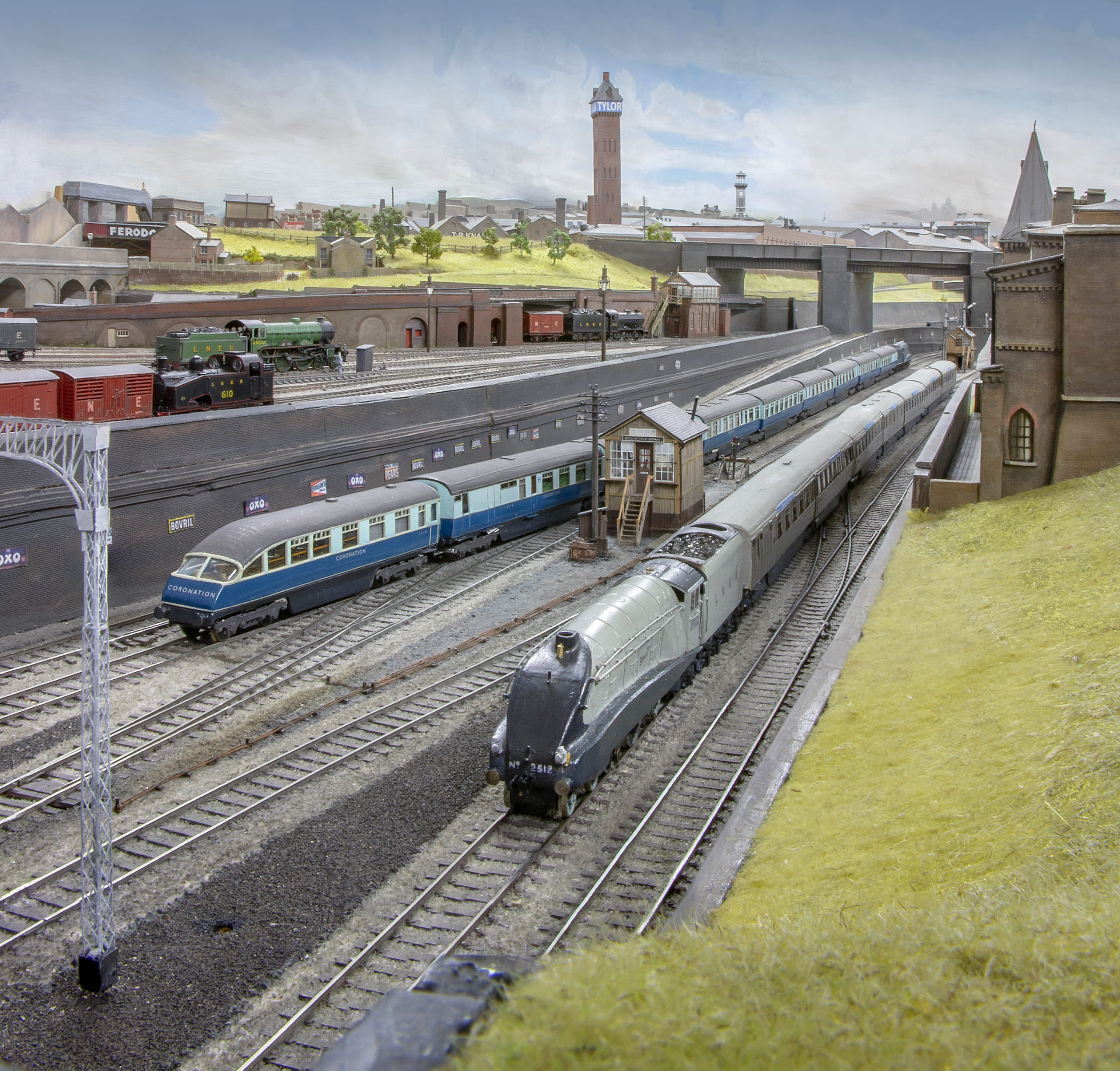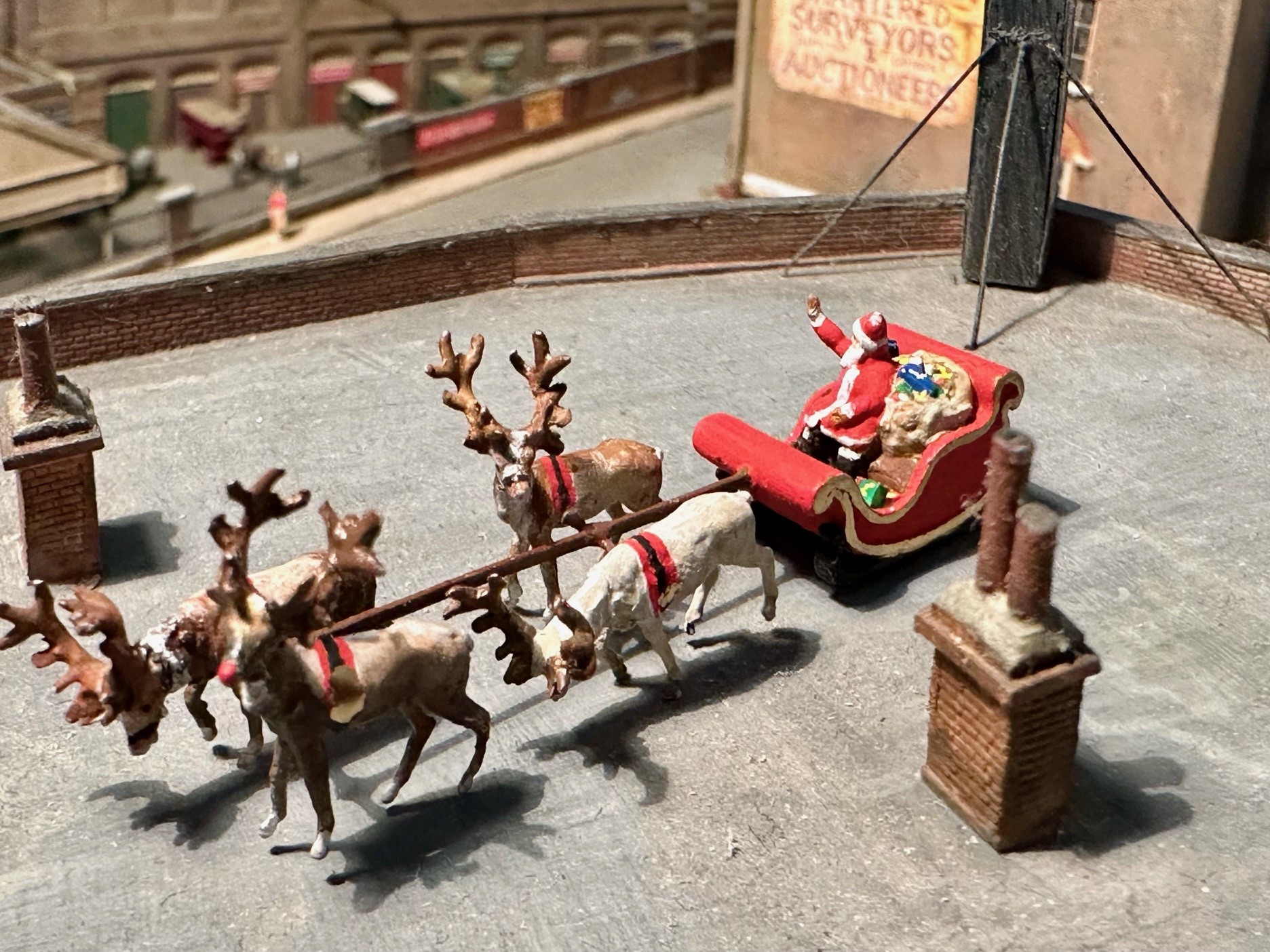Empire Mills gets a turntable
Tom Cunnington
26th June 2016
4 minutes

Following our last blog in May, we have unpacked the layout from its hibernation and a group of members gathered to go through the list of stuff that we thought needed doing. Now as we know, there is no ‘right way’ to build a model railway. There are certainly some wrong ways but most of us have a preferred way, generally one that is proven to work for us. And with a pretty much new team there were various ideas of how things that need to be sorted out could be done differently from the original plan.
One of the things on the list was to improve the track around the entrance to the fiddle yard, and the fiddle yard cassettes themselves. The current system is L-section aluminium fixed to foamboard which has warped, and it’s all a bit tight around the entry to the layout.
After some debate about how to improve things, we decided to move away from the cassettes entirely, to some sort of sector plate. John J headed home to draw up some options. By the following week, he had come up with options for a sector plate, a traverser and two options for a turntable. After some deliberation, we agreed on a turntable – it can be used as a sector plate, but gives extra flexibility to be able to simply rotate the train to eliminate handling the stock in normal circumstances.
The structure of the underlying baseboards helped – the box structure is easily adapted as you can see in one of the pictures near the bottom. The centre of the turntable is off-centre to allow for the angle at which the track enters the fiddle yard. Whilst this means it fits within the front line of the layout, it does swing out at the back of the layout. The ends of the turntable have a pair of bearings which carry a fair amount of the load, so it needs a surface to run around on. As well as a hardboard surface in the well, there is a plug in section that is attached to the back (shown in the pictures resting against the wall). For running in Keen House, there is a short stub, as the turntable will normally have to run as a sector plate due to space constraints in the layout’s normal ‘home’, shown here in the bottom right corner.
Under the turntable are the electrical connections that switches the direction of power when the turntable is reversed. There are wipers on the base, which are connected to the track section feed, and two concentric rings of copper clad on the base of the turntable, with double breaks in the “tracks” to make sure there is a brief dead section when the table is being rotated. These are shown in the first two picture below. There will be two sets of identical switches to turn the power on and off to the roads on each side of the turntable, made so they are live when nearest the operator. John’s even managed to make most of the turntable from the previous base to the cassettes, so little has been wasted.
The next picture shows the home-made bolts made from brass tube and rod. The bolts in shops these days are so sloppy I suspect even tinplate O gauge would have trouble using them for working alignment. Eileen’s Emporium supplied the brass, with accurate 0.25 inch rod that slips just inside 9/32 tube, and there is the next size of tube up to provide extra strength. The tube is soldered to some flat brass, and drilled. There’s an extra bolt in case we decide to add another track at the back in the future to access the back of the layout for a future module.
The next stage was to lay the four roads of brass track (as used on Copenhagen Field’s fiddle yards), and fix some steel L-section along the sides to keep it rigid. The original plan was to put a couple of hinged end pieces to stop trains flying off through centrifugal force as the turntable is spun round. However after more thought the decision was taken to built a wall around the outside of the plug-in section to then even if power does get to the rails stock can’t actually fall of the layout.
Because it’s a turntable, the easiest way to identify the tracks is through colours, so the gap between the tracks is painted and the switch panel has location markings to help reduce the chance of operator error.
Although there is a bit more wiring to be completed to connect it to the rest of the layout, work on this board is almost complete.
Although Empire Mills has passed to a new owner, find out about our new EM gauge layout Orchard Wharf here, and the EM gauge layout Minories (GN) here
Thursday Track Nights
We are open on Thursday evenings from 7pm to 9pm at our Keen House clubrooms. Visitors are welcome, please come along and introduce yourself.
Address:
Keen House, 4 Calshot Street, London, N1 9DA
Become a member



